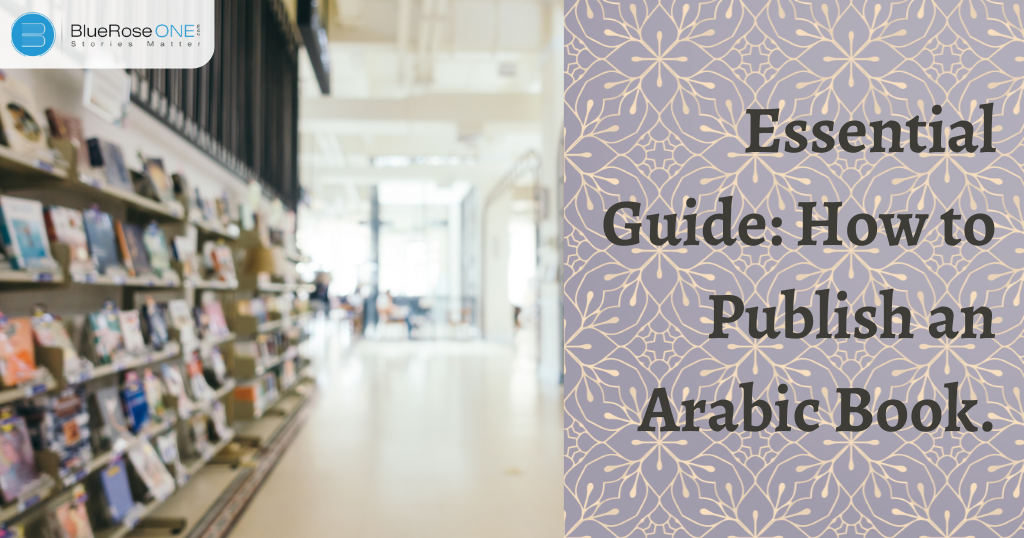Thinking to publish an Arabic Book? Arabic is the official language of the Arab League’s 22 member countries. There are more than 300 million Arabic speakers worldwide, with the majority of them residing in the Middle East and North Africa. It is also one of the United Nation’s six official languages (UN). Despite this, just 1% of adults in the UK can hold a basic conversation in Arabic.
Read: Complete Guide: How to self-publish an astrology book in 2022?
Arabic, like Aramaic and Hebrew, is a Central Semitic language. Fusha, or Standard Arabic, is a different form of the language used in media, newspapers, literature, and other formal situations. ‘Aamiya, or colloquial (spoken) Arabic, has several forms that are employed in everyday speech, and they vary from country to country and even town to town. The many types coexist to perform diverse functions in society.
At its heart, Arabic evolved from an anecdotal and poetic tradition that flourished in the Arabian Peninsula prior to the arrival of Islam and a codified Arabic script. The Arabic alphabet is frequently employed in art through calligraphy, and more current and contemporary Arabic art is now being made; some of it incorporates a fusion of calligraphy and graffiti, known as ‘calligraffiti.’
A fun fact that we found was that there are at least 11 terms in Arabic for love, and each one represents a different step in the process of falling in love.
The most noticeable distinction between Arabic and English is that Arabic is written from right to left. There are also a few sounds that aren’t found in other languages, such as ‘ح’, which is an ‘h’ sound like in ‘hubb’ (love). Consider breathing on a window pane to generate a mist to get an idea of how this is spoken.
Only remnants of the written language existed prior to the 5th century when Arabic literature arose. The Qur’an, largely recognised as the finest piece of Arabic literature, would have the most long-term impact on Arabic culture and literature. Arabic literature flourished during the Islamic Golden Age and has remained vibrant to the current day, with poets and prose-writers gaining increasing popularity throughout the Arab world and the Arab diaspora.
The first major Arabic literature was created during the mediaeval golden age of lyric poetry, which lasted from the fourth through the seventh centuries. The poems are deeply personal qasida, or odes, that are frequently relatively brief, with some exceeding 100 lines. They discuss tribal life as well as themes such as love, battle, courage, and the chase.
What role does Arabic literature play?
Arabic literature illustrates the wealth and diversity of the Arabic people, as well as their language and culture. Arabic literature has been shared with people all around the world thanks to translation.
Arabic literature illustrates the wealth and diversity of the Arabic people, as well as their language and culture. Arabic literature has been shared with people all around the world thanks to translation.
Three generations of poets used a variety of these elements into their work. Imru’ al-Qais bin Hujr al-Kindi, commonly regarded as the father of Arabic poetry, al-Muhalhil Adi ibn Rabia’, Tarafah ibn al-Abd, and Ka’b ibn Zuhayr were notable pioneers of the first classical period.
Classical Arabic poetry, like other genres of literature, is constructed on the notion of scansion: it has a mathematical complexities that give it a strong rhythmical and emotional aspect. That level of complexity isn’t immediately apparent, but if you look closely, you’ll notice that the structure is based on numbers. It’s analogous to a piece of music in that it may be appreciated for both its surface beauty and, on a micro-level, the beauty of its numerical intricacy.

Modern Arabic drama emerged in the nineteenth century, primarily in Egypt, and was heavily influenced and imitated by French works. It wasn’t until the twentieth century that it began to take on a particularly Arab flavour and became visible elsewhere.
Poetry is heard on a daily basis throughout the Middle East. Vernacular poetry, classical poetry, and other forms of poetry are all recited at weddings, funerals, and other social gatherings. Reading Arabic poetry is like reading an alternate history of the world: you hear about love, exile, death, love, longing: universal themes that have persisted for millennia. It talks to everyone on the planet.
A few tips on how to publish an Arabic Book-
- Continue to work on and finish your manuscript.
Getting started on your manuscript is the first step toward your goal of producing a book in Arabic. Determine the premise, characters, and setting of your story. Look for ideas in Arabi novels. Your manuscript is the most important part of your book. Write your script and figure out what you’ll need. For example, if you write in English but want to target a Arabic audience, have your script translated to help you reach your aim.
You must ensure that the essence is not lost during the translation process. These services may be provided by Arabic publishing houses or Global Publishing Houses - Figure out the services you’ll need.
You should be aware of the services you’ll need, such as editing and proofreading. You will need translation services if you are writing your book in English. - Make a list of publishing houses while keeping in mind your target demographic.
Determine which Arabic publishing house will best meet your needs. Conduct research on the publishing house you intend to utilise. There are a million Arabic Book Publishers, but you must consider which ones would suit you and your budget.
Collect information about several Arabic publishing houses that support and recognise the importance of your narrative. Reduce it to the top three. - Compare and choose.
Compare the Arabic Book Publishers on your short list to choose one that meets all of your requirements. Choose a publishing business that can meet all of your specific service needs. - Begin the publishing process.
You can begin the process of publishing your dream project once you’ve decided on a publishing business. It is necessary to collaborate with the publishing staff. - Marketing and promotion.
Once your book is published, market it to your target demographic. Make sure your intended audience understands what your book is about and why they should read it.
You may also like: Positive Character Traits And Why They Are Crucial
Sometimes in the process of writing it is easy for you to lose motivation for writing or you get stuck at a point – so, to inspire yourself here are few famous Arabic novels that will help you get back on the track:
- The Meadows of Gold by Al-Masudi
- Beirut Nightmares by Ghada Samman
- Cities of Salt by Abdul Rahman
- Azazeel by Youssef Ziedan
- I loved you more than I should by Atheer Abdullah Al Nashmi
BlueroseONE assists emerging writers towards being noticed in both national and international markets. We publish in regional and worldwide languages and provide a variety of adaptable services in this regard.
















